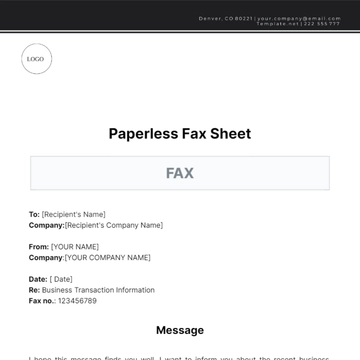Free Business Architecture White Paper

I. Executive Summary

This white paper provides a comprehensive analysis of the business architecture framework and strategies for aligning [Your Company Name]'s business objectives with its organizational processes and IT infrastructure. It highlights key findings and recommendations to optimize business operations.
II. Introduction to Business Architecture
Business architecture refers to the blueprint of how [Your Company Name] operates, integrating business processes, information flows, organizational structure, and technology infrastructure. Understanding these concepts is crucial for strategic planning and sustainable growth.
III. Current State Analysis
Aspect | Strengths | Areas for Improvement |
|---|---|---|
Processes | Streamlined workflows and efficient process automation | Communication gaps in inter-departmental workflows |
IT Systems | Robust infrastructure supporting current operations | Legacy technology dependencies hindering scalability |
Data Management | High data accuracy and availability | Lack of integrated data analytics capabilities |
Organizational Structure | Clear roles and responsibilities, well-defined reporting hierarchies | Siloed departments impacting cross-functional collaboration |
Customer Engagement | Strong customer satisfaction metrics, effective CRM systems | Limited omnichannel customer interaction capabilities |
Current metrics and performance indicators are shown in Table 1.
IV. Future State Vision
[Your Company Name] envisions a future state where business processes are agile, technology is innovative yet scalable, and organizational structures promote collaboration and efficiency. This vision aligns with the company's long-term strategic goals.
V. Recommended Strategies for Alignment
To transition from the current state to the proposed future state, the following strategies are prescribed:
Leverage cloud technologies for increased flexibility and scalability in IT infrastructure.
Implement data-driven decision-making processes to enhance strategic insights and operational efficiency.
Foster cross-functional collaboration among teams to streamline processes and improve communication.
Invest in talent development programs focused on digital skills and competencies to drive successful digital transformation initiatives.
VI. Implementation Roadmap

An actionable roadmap is presented to guide the gradual implementation of business architecture improvements. Each phase includes timelines, responsible parties, and required resources as depicted in Table 2.
Phase | Activities | Timeline |
|---|---|---|
Phase 1: Planning | Define project scope, objectives, and stakeholders. | Month 1 - Month 2 |
Phase 2: Analysis | Conduct detailed analysis of current business processes and IT infrastructure. | Month 3 - Month 4 |
Phase 3: Design | Develop proposed business architecture frameworks and strategies. | Month 5 - Month 6 |
Phase 4: Execution | Implement changes, monitor progress, and adjust strategies as needed. | Month 7 - Month 9 |
Phase 5: Evaluation | Assess the effectiveness of implemented changes and identify areas for further improvement. | Month 10 - Month 12 |
VII. Key Stakeholders
The success of these initiatives requires the involvement and endorsement of several key stakeholders from various departments within [Your Company Name]. These include:
Chief Information Officer (CIO): Oversees technology strategy, aligns systems with goals, ensures data security, and drives IT innovation.
Chief Technology Officer (CTO): Focuses on technological vision, leads R&D, evaluates new tech, and optimizes solutions for business goals.
Operational Managers: Supervise daily operations, ensure efficiency, manage resources, and align activities with business strategies.
Human Resources: Manages employee matters including recruitment, training, performance, relations, benefits, and compliance.
Further involvement from these stakeholders can be structured through regular consultations, workshops, and strategy sessions, ensuring alignment and cohesive progress toward the outlined business architecture goals.
- 100% Customizable, free editor
- Access 1 Million+ Templates, photo’s & graphics
- Download or share as a template
- Click and replace photos, graphics, text, backgrounds
- Resize, crop, AI write & more
- Access advanced editor
Delve into the intricacies of business architecture with Template.net’s Business Architecture White Paper Template. Crafted for clarity and depth, this editable template integrates seamlessly with our Ai Editor Tool. Present frameworks and strategies with precision, guiding businesses towards optimal structural frameworks and innovative solutions. Elevate your insights to empower informed decision-making and strategic planning for sustainable growth.




















